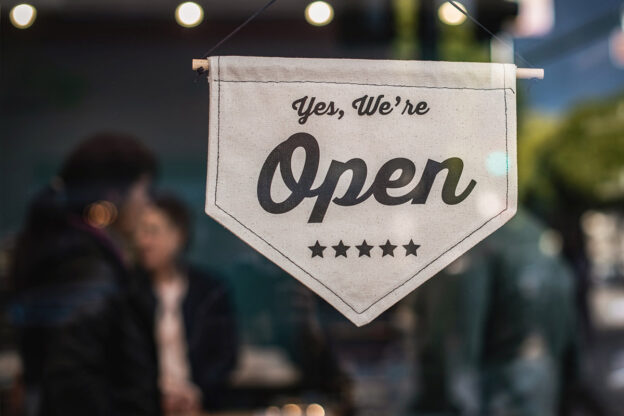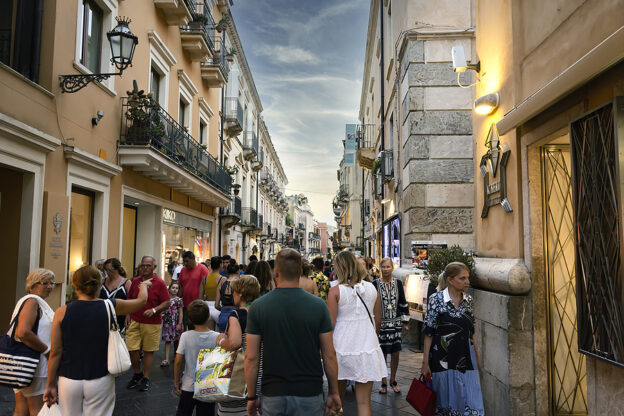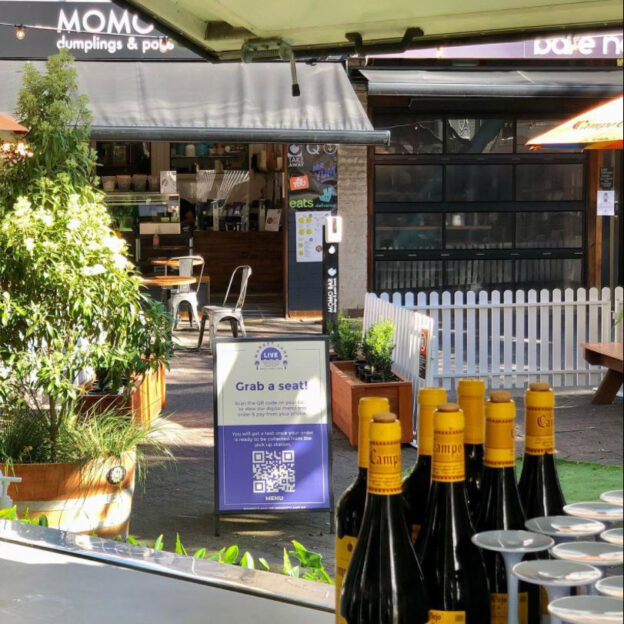After a difficult few month of forced closures or drastically restricted trading, Northern Beaches restaurants, pubs, hairdressers, gyms and other businesses are now open to fully vaccinated people.
Some restrictions remain, with patron density limits and mandatory face masks for staff and customers in all indoor settings. In outdoor settings masks are only required to be worn by staff.
Patron QR code check-ins and proof of vaccination is required, however the Service NSW “vaccine passport” app designed to help businesses manage this is not yet operational, meaning Medicare vaccine certificates will need to be used for checking vaccination status.
Further loosening of restrictions for the vaccinated is expected when 80 per cent of over 16-year-old NSW residents are vaccinated, while from 1 December the unvaccinated will see more freedoms and office-based businesses will no longer be required to let staff work from home.
Regardless, some rules will remain, such as mask-wearing and a maximum density of one person per two square metres. Rules that have seen other countries like Italy successful exit lockdowns without case numbers surging again.
Very strong Christmas spending forecasted
The good news is that the leadup to Christmas and the holiday period I, on the basis that vaccine rates increase to allow more shopper mobility, shows every indication that we will see a much stronger year for retailers. Extended lockdowns, travel restrictions and low interest rates have created a perfect storm of cashed up and excited consumers ready to spend, according to CEO of the Retail Doctor Group, and Manly resident, Brian Walker.
To help businesses capitalise on the predicted surge of consumer spending, Brian offered the following nine strategies.
Stock up: With the expected influx of spending, ensuring you have enough stock on hand, or available through robust supply chains (which are already strained due to COVID) will help capitalise on strong demand, according to Brian.
“Be prepared to invest in the right products for your customers. If you are strong in a certain category and have proven history there, all conditions are there for a very robust Christmas and New Year sales period,” he said.
Invest in your staff: Along with stock shortages, staffing shortages will likely be the greatest challenge for retailers over Christmas, according to Brian. Existing staff will also be under more pressure, so he encourages businesses to invest in training and support mechanisms and to beware of employee fatigue.
Support local residents (and businesses): With residents restricted from leaving their LGA, COVID saw a rise in community and a return of the local high street.
“Our Retail Doctor Group studies have shown consumer relationships with their local community and retailer of choice is now stronger than ever,” Brian said, adding that retailers should employ sales and marketing strategies to continue strengthening that local relationships.
Prepare for an influx of local tourists: People can now leave their local LGAs, but cannot travel interstate of overseas, meaning destination regions like Manly and the Northern Beaches will see an influx of visitors, Brian said.
“It has all the classic elements of being extremely busy, so retailers should also develop sales and marketing strategies that are tailored to those expected visitors.”
Consider a facelift: People are fatigued after months of lockdowns and so are going to look for something fresh and interesting, according to Brian.
“Dress up the window, give your shop a coat of paint, freshen up your menu or drinks list. Give people something new and exciting,” he said.
Don’t neglect online: While lockdowns may be ending, it does not mean the end of online, which has grown to an average of 15 per cent of total spend from an average of 9 per cent pre-COVID, Brian said.
Ensure your website, online ordering, home delivery and other digital business tools are not neglected as people return to premises.
Be proudly COVID-safe: Customers are expected to shy away from businesses that are not clearly COVID compliant, so ensure your processes for managing check ins, masks, social distancing, hand sanitiser and other strategies are polished, and don’t be afraid to promote it.
Marketing: Marketing strategies that welcome customers back with announcements around the strategies outlined in this article, and promote your COVID-safe compliance, will serve you well.
Brian also encourages all businesses to have their own CRM database, to manage email, social media and other communication tools to customers. Focus on lifetime customer value as distinct from that one transaction
Consider your insurance: Businesses have a duty of care to provide a safe environment for their customers and their staff, which extends to COVID protection measures. Insurances like Workers Compensation and Public Liability Insurance are designed to offer some protection, however they have been largely untested with COVID claims, so it is prudent to check with your insurer or broker
What is the future of retail?
Asked about his vision for 2022 and beyond, Brian said that he expects consumers to continue returning to good retail businesses, but for online and omni-channel to also remain a strong part of the buyer journey.
“Physical retail is a very important part of consumers lifestyles. Retail is a human experience. People want to see, touch, smell, look at and talk to people and products. They also enjoy the habitual behaviour that shopping brings. It is part of our DNA and the social fabric of our communities.”









